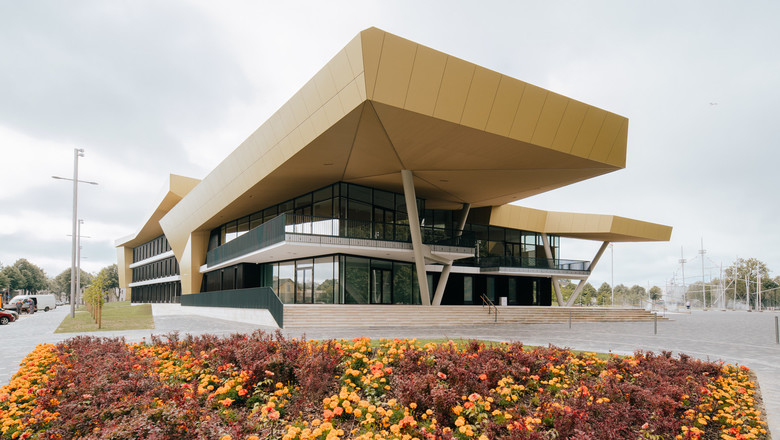
Concert Hall
Latvia and securing its acoustic gems

Concert Hall Latvia opened in the country's fifth biggest city, Ventspils, on the Venta River, in July 2019 to mark the 100th anniversary of Latvia’s de facto independence.
Ventspils is one of Latvia’s thriving cultural centres, well known for its music festivals, classical concerts and annual cultural and leisure events. In normal times, the concert hall and its outdoor amphitheatre hosts musical events and seasonal festivals, with regular performances by national and international concert musicians. The building also houses the Ventspils Music School, Children’s Music School and Music Library.
Since the Covid-19 pandemic hit in 2020, the concert hall and all its facilities have largely been closed to the public, as performances are not currently permitted. G4S has been working with the concert hall’s owner, Kurzeme Philharmonic, Ltd., to put in place an intelligent, responsive and largely remote security system, to protect this cultural treasure.
Impressive, modern building
“We formulated a solution which met the needs of the concert hall around the clock. A responsive system which could quickly pick up any potential threats to the building, which our team could respond to in a safe and timely way,” said Aleksandrs Šnevels, Technology Solutions Director for G4S in Latvia.
Designed by award-winning German architectural practice Haascookzemmrich Studio 2050, the hall is an impressive, modern building; it includes a 600-seat capacity acoustic concert hall, a second smaller hall, a recording studio and a cafe as well as an outdoor amphitheatre, which seats 1,000 spectators.
The concert hall is the proud home of two unique musical instruments - the world's largest vertical grand piano created by Latvian-born piano maker David Klavins and a world-class acoustic organ made by Johannes Klais Orgelbau, a German musical instrument specialist.
AI-driven analytics
G4S has devised a security solution which combines existing cameras on the outside of the building, an additional computer server on site as well as artificial intelligence driven analytics. This is used to scrutinise any footage that is fed back from the site, which needs further analysis. If human movement is detected, an alarm is triggered at the G4S monitoring centre (SOC).
A G4S SOC operator will then go through a process to establish whether there is a threat or not, by verifying the alarm and reviewing video fragments. If necessary, he or she will send a patrol and response team to investigate at the site. There are motion sensors installed inside the premises and an alarm in the monitoring centre will be triggered if an unauthorised person enters the building.
Analytics for detection
“Our system can also tell if someone is attempting to deface the building with graffiti and in such a situation it is possible to turn on a speaker system remotely to warn those perpetrators to move away from the building,” said Aleksandrs. “It’s not efficient to have a security professional present at the hall 24/7 while it is closed. The system we have designed, gives full visibility of the building and we can respond fast, whether that is remotely or on site.”
Photography supplied by: Kurzemes philharmonic.
You can read more about our security services in Latvia here
